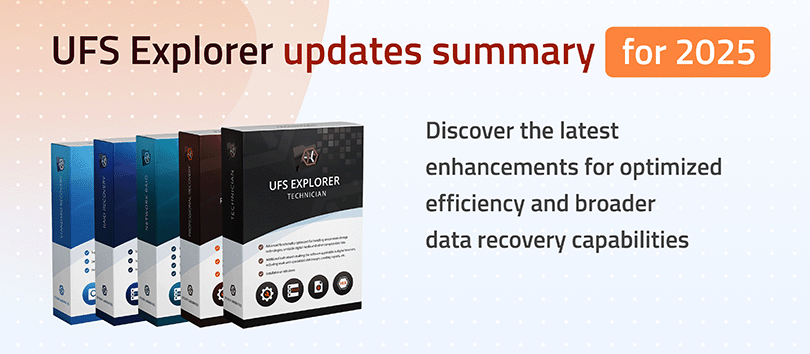
Key improvements in UFS Explorer explained: A roundup of the latest updates
05.10.2025
Over the past months, the UFS Explorer development team has released a series of updates that enhance the product’s functionality across different editions. As a result, the software has become even more effective and further reinforced its position as a reliable toolkit for professional data recovery. From more precise search to expanded support for encrypted volumes, this article will guide you through the most notable changes introduced from January through September 2025, highlighting their practical impact.
You can also find a quick overview of the new features and optimizations in each product version on their respective changelog pages:
- UFS Explorer Standard Recovery
- UFS Explorer RAID Recovery
- UFS Explorer Network RAID
- UFS Explorer Professional Recovery
- UFS Explorer Technician
All editions of UFS Explorer
The following updates affect the core functionality of UFS Explorer shared across all editions, improving both performance and usability of the software.
Extended file search capabilities
UFS Explorer now allows you to search for files based on their actual content, rather than relying solely on properties like filenames or sizes. This makes it possible to locate important files even when their names are missing or file system metadata got damaged. You can begin by specifying a file type to search for, choosing from a list of built-in types or using your own custom rules. Multiple file types can be selected simultaneously, enabling a more comprehensive search.
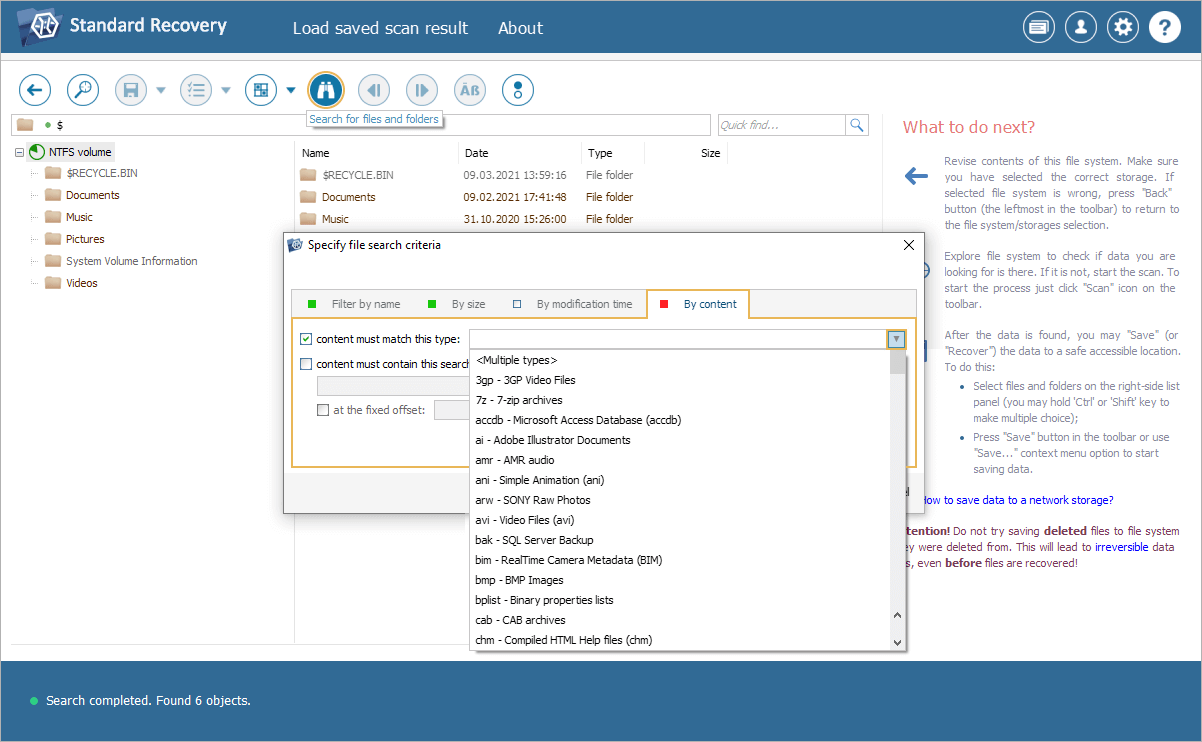
After defining the file type, you can refine the search further by setting a specific content pattern. This function supports advanced hexadecimal syntax, and you can decide whether the pattern should appear anywhere in the file or at a fixed offset. These options can be used individually or together, allowing for highly targeted and efficient searches.
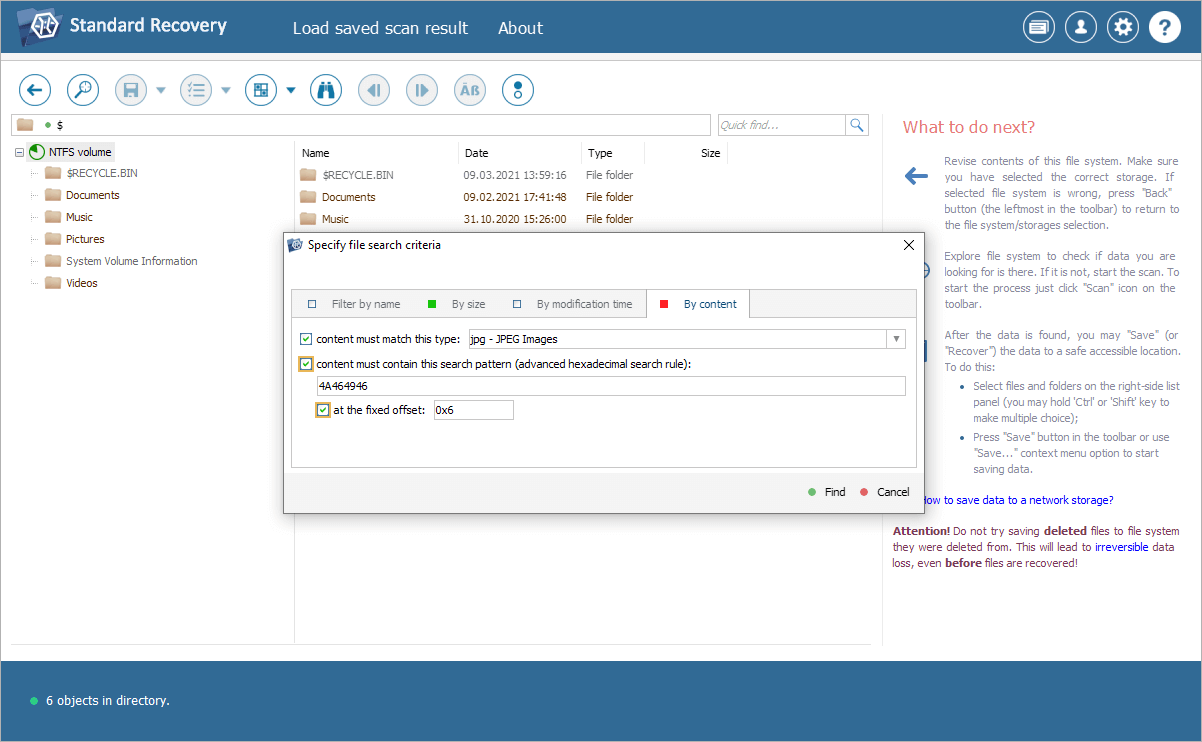
Enhanced file system scans
UFS Explorer’s scanning algorithms have received a considerable boost in speed and precision. For ExFAT, the scan has been reworked to accelerate the completion stage and ensure better recovery of folder structures. NTFS scanning has been refined for more accurate restoration of large files from the journal. For ReFS, the output can now be cleaner thanks to the removal of occasional duplicate files and proper handling of reparse points with shorter metadata chains (ReFS version 3.14). Ext4 scan results have been revised as well, with possible duplicate entries eliminated from recovered folders. FAT32 scanning has been tweaked for better recognition of the file allocation table, even when both copies are heavily damaged. Reading of sparse files on ZFS has also been improved. In addition, raw recovery has been expanded to include extra audio formats such as FLAC and AMR, further broadening the scope of recoverable files.
More flexible management of symbolic links
The software has become more versatile in handling symbolic links, which are pointers to other files or directories rather than actual instances of the data. By default, UFS Explorer now attempts to restore symlinks on the target storage. This allows preserving the original file structure and references during data recovery, which can be important for some systems or applications. Moreover, there is a new option to save the linked files themselves instead of the links. This is especially useful in cases where having the actual file content may be more practical than recreating symlinks, for example, on Promise Apollo or similar storage devices. This setting can be enabled in the "Copy selection (advanced)" tool to let users choose whether to restore symbolic links or the linked files during the given copying operation.
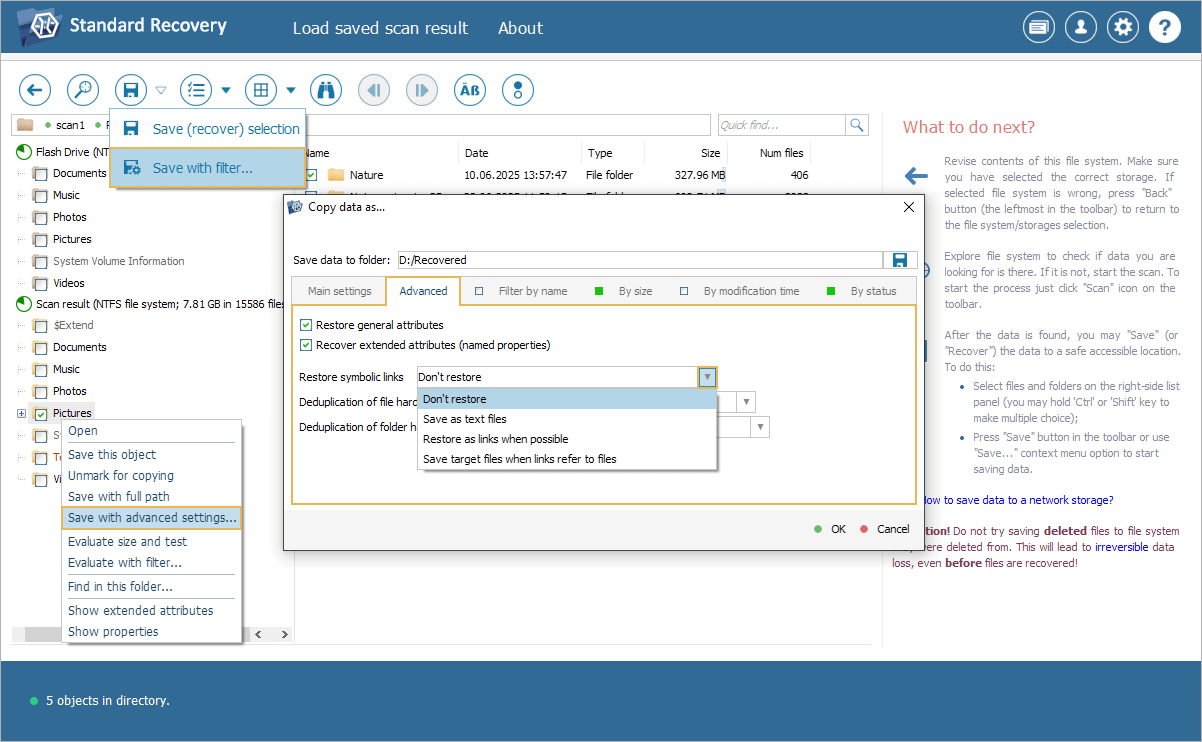
Better recovery of deleted partitions and files
The software has become more efficient in scenarios involving deleted data. First, UFS Explorer can now identify partitions that existed before a drive was reinitialized using the GPT scheme, even if it currently appears empty and only the Reserved partition is present. The program can recognize remnants of these deleted partitions and makes them available for recovery, increasing the chances of retrieving data that might otherwise be undetected. Secondly, the procedure for recovering files from the Windows Recycle Bin has been refined, making it possible to restore previously overlooked deleted items.
Customizable drive visibility
Drive visibility controls have been introduced in UFS Explorer, allowing you to hide physical or logical drives in the interface. For example, you can hide system drives or target drives to reduce clutter, prevent accidental operations and focus only on the drives relevant to your current recovery task.
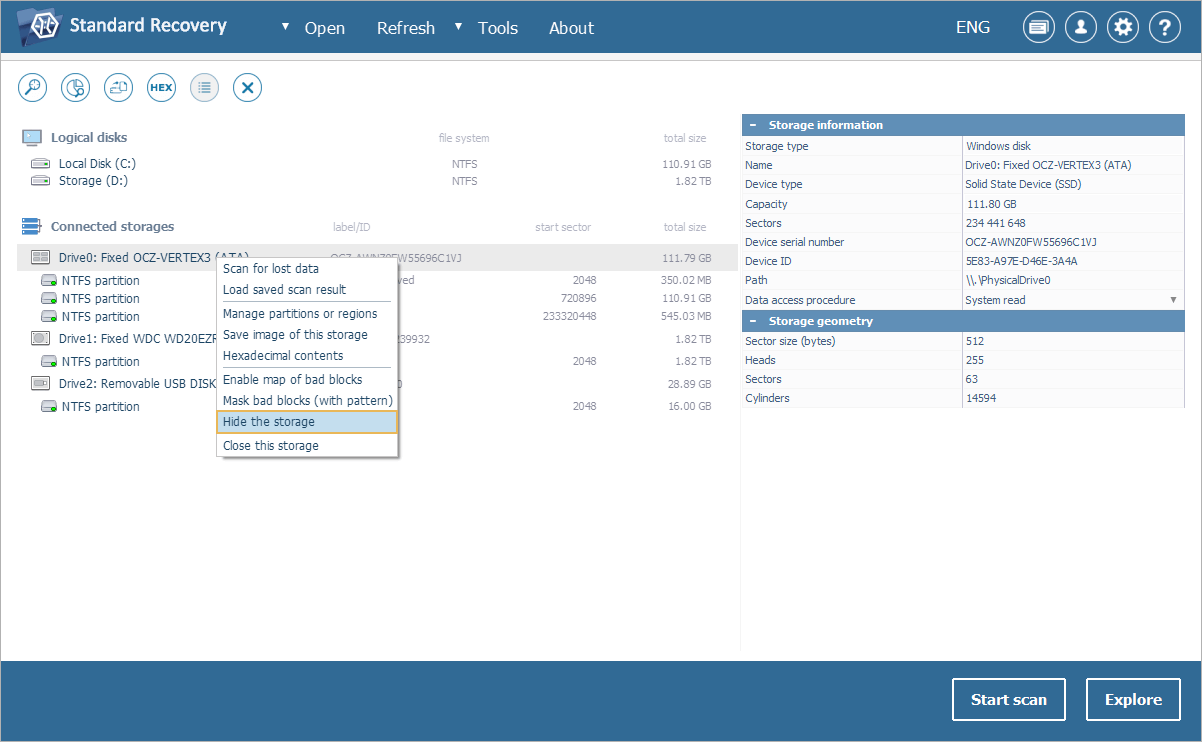
To ensure hidden drives remain accessible, the software provides a dedicated interface for unhiding or opening hidden storage. This gives users full control over which drives are visible, helping to minimize the risk of mistakes during data recovery.
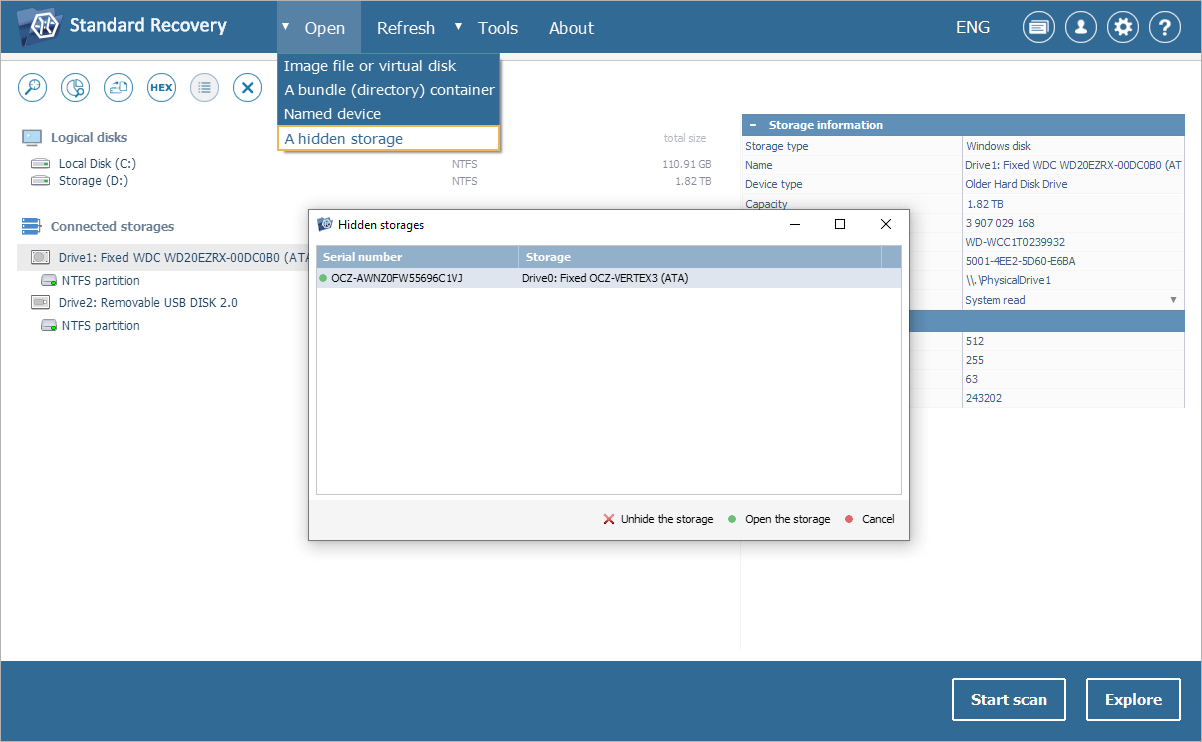
Improved handling of device information in disk images
Another update impacts the way UFS Explorer works with disk images – specifically with their associated device metadata. When creating a disk image (in formats other than *.sdlsp), the software now generates a *.props file containing key properties of the original device, such as its name, serial number and WWN (World Wide Name). When opening an image, UFS Explorer checks for this file and restores the device information automatically, helping to preserve the original identity of the storage medium. This is particularly valuable in professional recovery scenarios where the correct device metadata may be critical. In addition, users can override the serial number and/or WWN for images created by third-party software using *.props files, ensuring that images from any source can be seamlessly integrated into the recovery workflow.
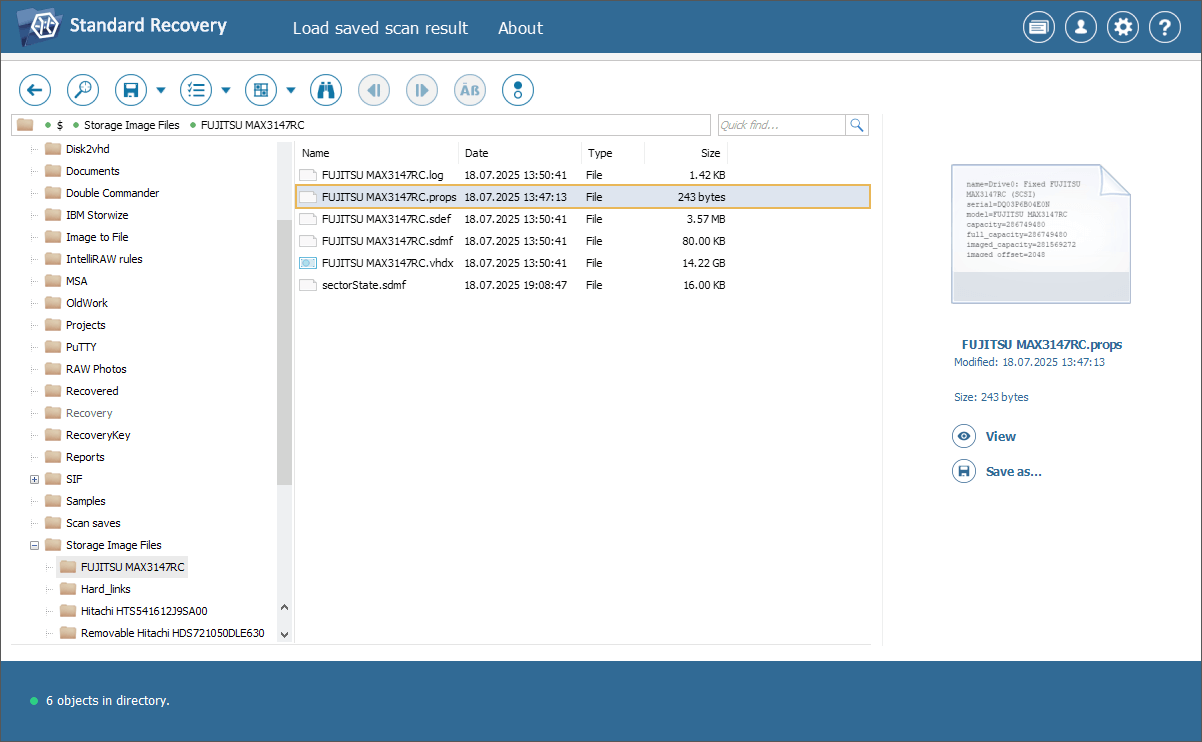
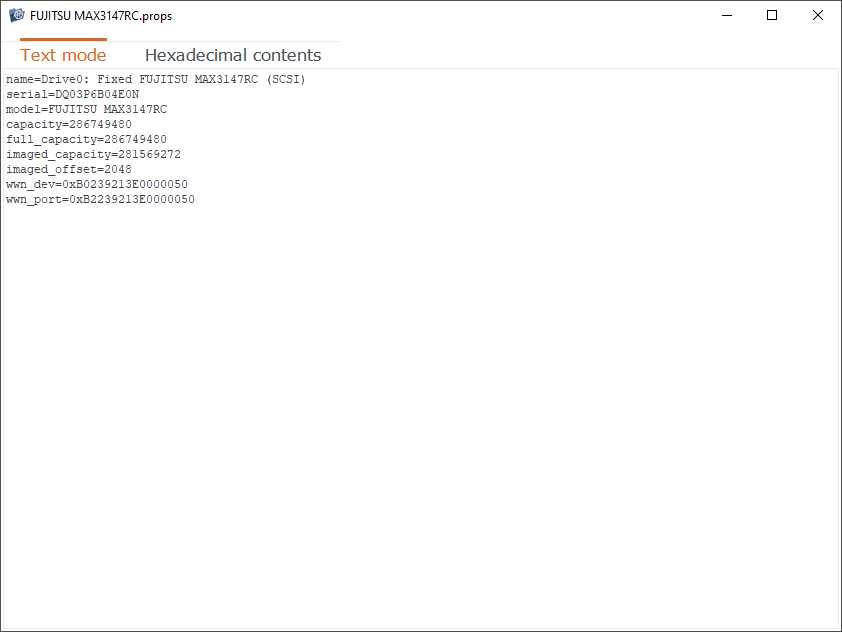
UFS Explorer RAID Recovery and higher
UFS Explorer RAID Recovery, UFS Explorer Network RAID and higher editions have received multiple updates focused on more effective work with various multi-disk storage configurations.
Smarter BeyondRAID Assistant for Drobo
The Assistant for Drobo devices has been upgraded for more intelligent processing of BeyondRAID metadata. It now detects the size of metadata blocks on BeyondRAID drives automatically, removing the need for manual input. If drives in the same set appear to have different metadata block sizes, for example, due to prior replacements or firmware updates, the tool can adjust for these mismatches, so the array can be reconstructed correctly. Finally, before starting a scan, the software verifies if the detected block metadata size is valid and consistent across all components, ensuring that scanning doesn’t proceed with incorrect parameters.
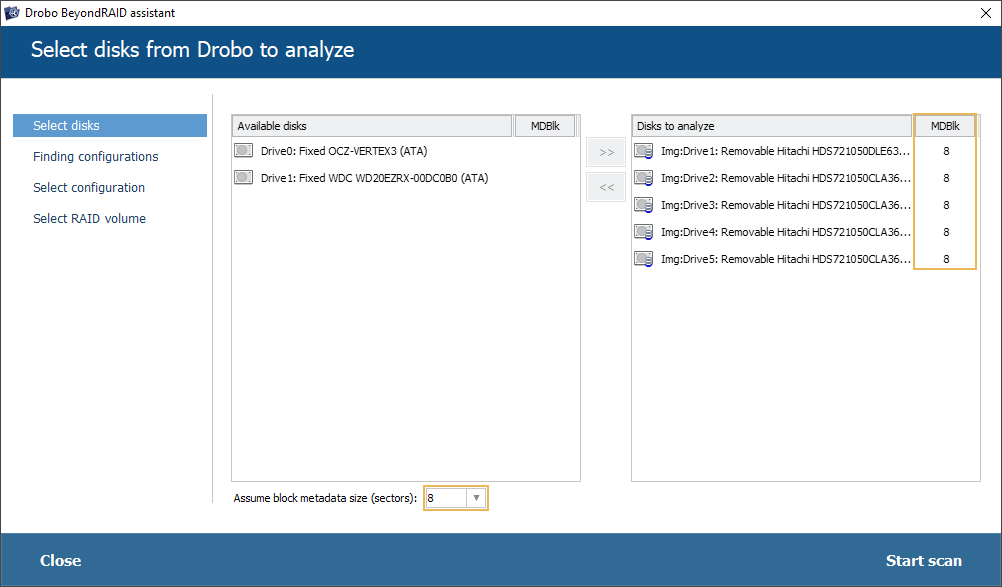
Enhanced support for Microsoft Storage Spaces
UFS Explorer has become significantly better at recovering data from Microsoft Storage Spaces, particularly on the latest Windows Server versions. The software now supports the SPCACHE storage caching mechanism used to accelerate operations on Parity volumes, so it can properly read and restore SPCACHE-based Storage Spaces. The automatic assembly procedure has been reworked to recognize and utilize transaction logs or cache when available, providing more accurate reconstruction. Users also gain greater control over the process, with options to skip automatic assembly, assemble only plain volumes or include the log/cache.
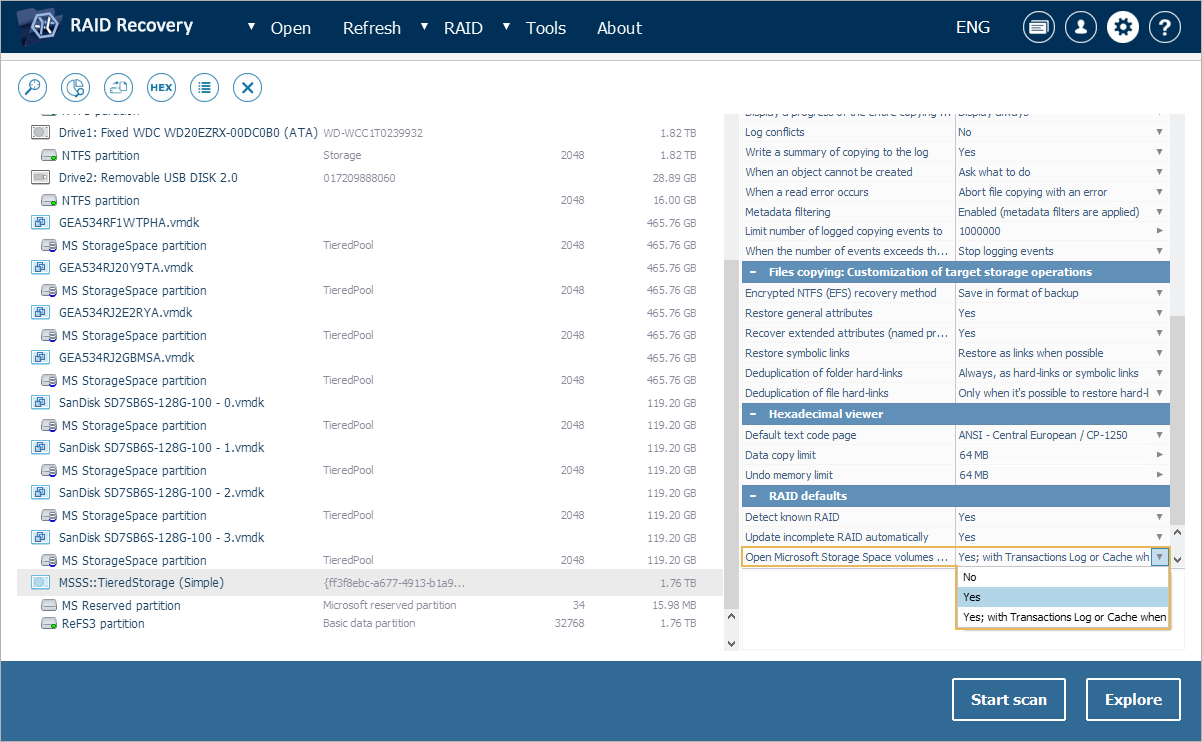
Better handling of Asustor NAS by Media Manager
UFS Explorer’s Media Manager has been updated to provide more solid support for Asustor NAS devices. The software now correctly reads and displays all content from single-disk NAS units, ensuring that all files and folders are visible in the interface. In addition, it can search for RAID member drives even if NAS-specific metadata is not present on them. This allows the program to identify the individual components and reconstruct the storage, even in cases where the metadata is incomplete or unavailable.
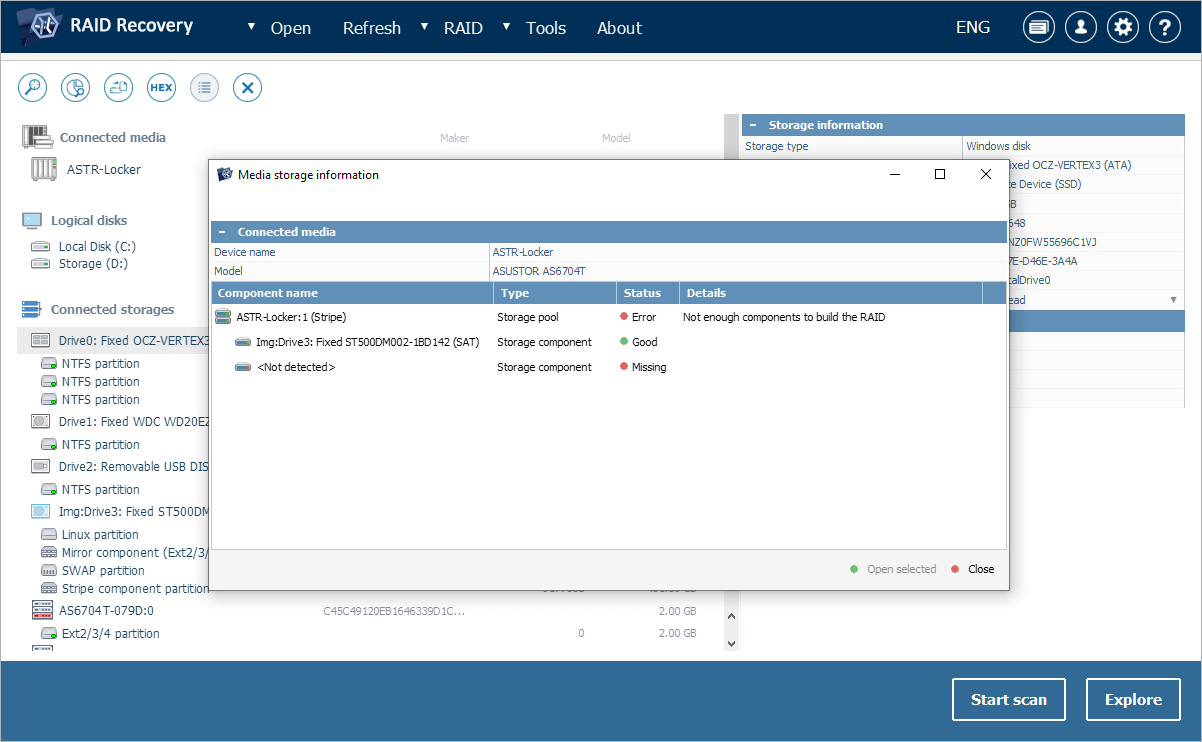
Improved RAID reconstruction
Assembly of complex RAID setups in UFS Explorer has become more accurate, enabling faster and smoother data recovery from multi-disk systems. The software can detect Intel ISM configurations in disk image files, ensuring that RAID structures created by Intel Storage Manager are recognized even when working from images instead of the original storage. Improvements in Btrfs RAID10 metadata reading allow for successful reconstruction of volumes even when some drives are unavailable. The adaptive reconstruction algorithm for RAID1E has also been refined, making successful data recovery much more likely. And lastly, "stripe over mirrors" layouts can now be reconstructed automatically, eliminating the need for manual intervention.
UFS Explorer Professional Recovery and higher
The Professional and Technician editions now include a range of new capabilities geared towards advanced data recovery scenarios.
Expanded decryption functionality
The utilities now offer more robust support for encrypted storage, making it easier to access data across a wider range of devices and encryption schemes. They allow working with full-disk encryption configured in FreeBSD via its native GELI system, using major encryption standards such as AES and Camellia. This support also covers GELI-encrypted pools created in FreeNAS version 11 and earlier, provided that the original exported key file is available.
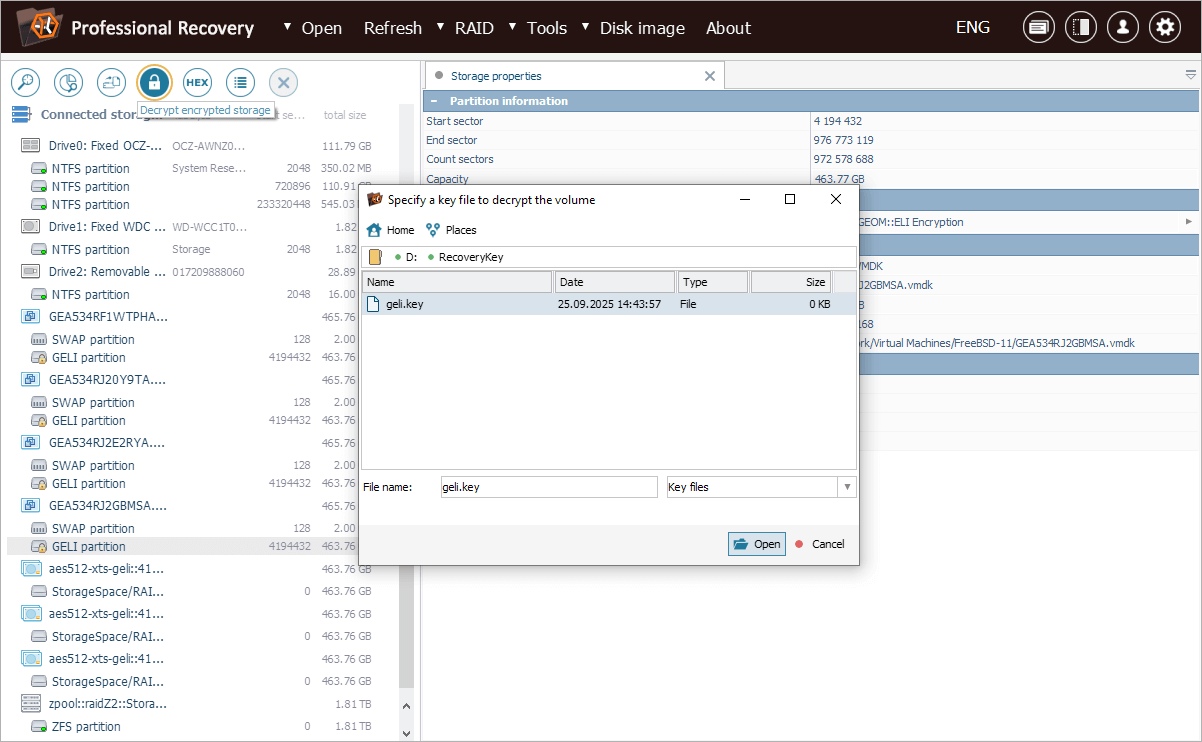
For Linux-based encryption, LUKS2 volumes with sector sizes larger than 512 bytes can now be decrypted without issues. In addition, Asustor MyArchive LUKS volumes can be deciphered using either password transformation or a backup key.
Encrypted shared folders on Asustor NAS units are now properly recognized in the Media Manager and can be decrypted using backup keys instead of passwords. The password unwrapping tool has also been upgraded to extract passwords from Asustor key backup files.
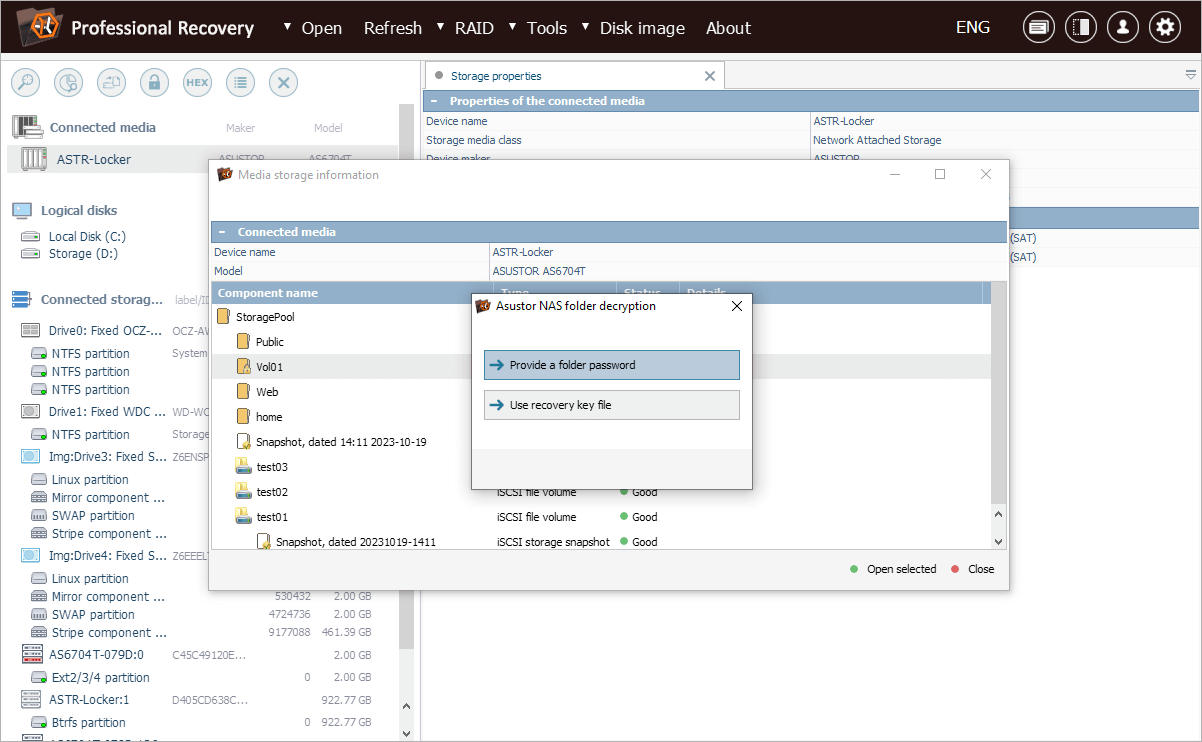
Finally, BitLocker support has been improved: the software can now search and decrypt partitions even if the superblock is missing, and it fully supports BitLocker on storages with 4K sectors, including on Microsoft Storage Spaces.
Quick access to disk image and archive contents
The software now contains a handy new tool called "Detect and open a contained file system". Available in the Explorer main toolbar and file’s context menu, it lets you instantly open the contents of a disk image in a separate tab and start browsing its folders and files right away, without the need to load the image separately in the interface.
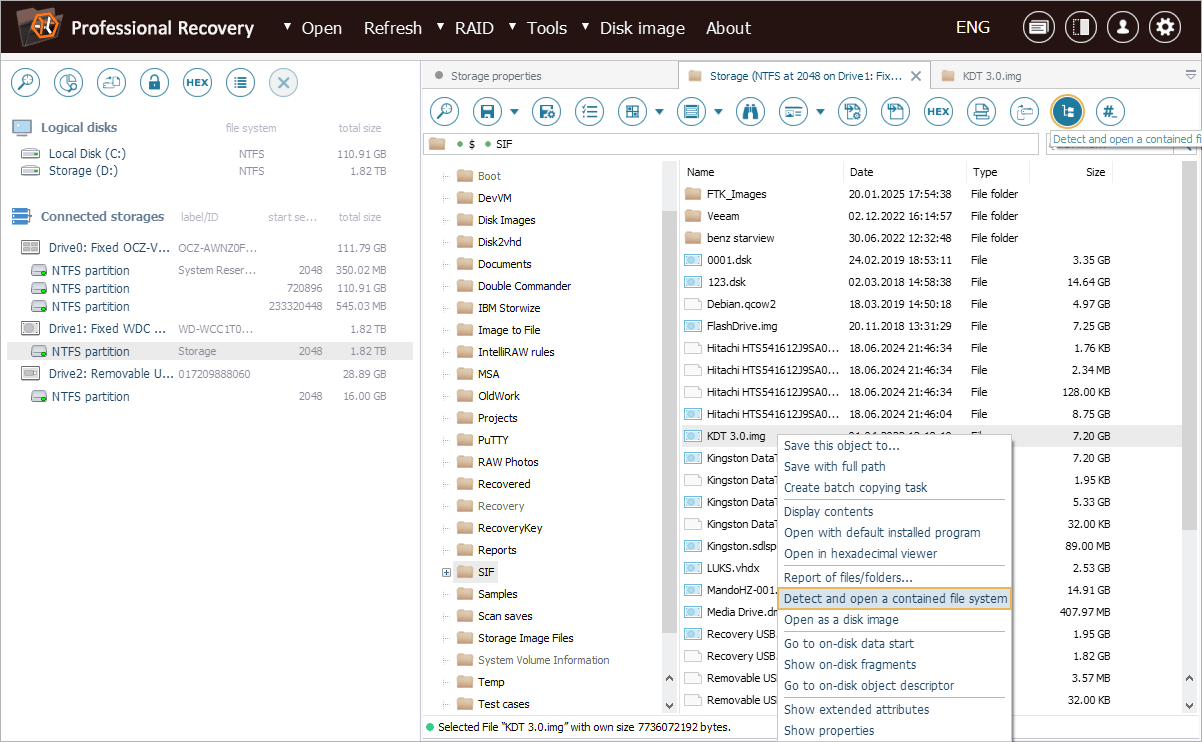
This quick-access feature also works with archive files via the virtual ArchFS mechanism. As a result, compressed data, such as ZIP or TAR.GZ, is presented like a regular file system, so you can navigate through it as if it were a mounted image, without extracting the archive first.
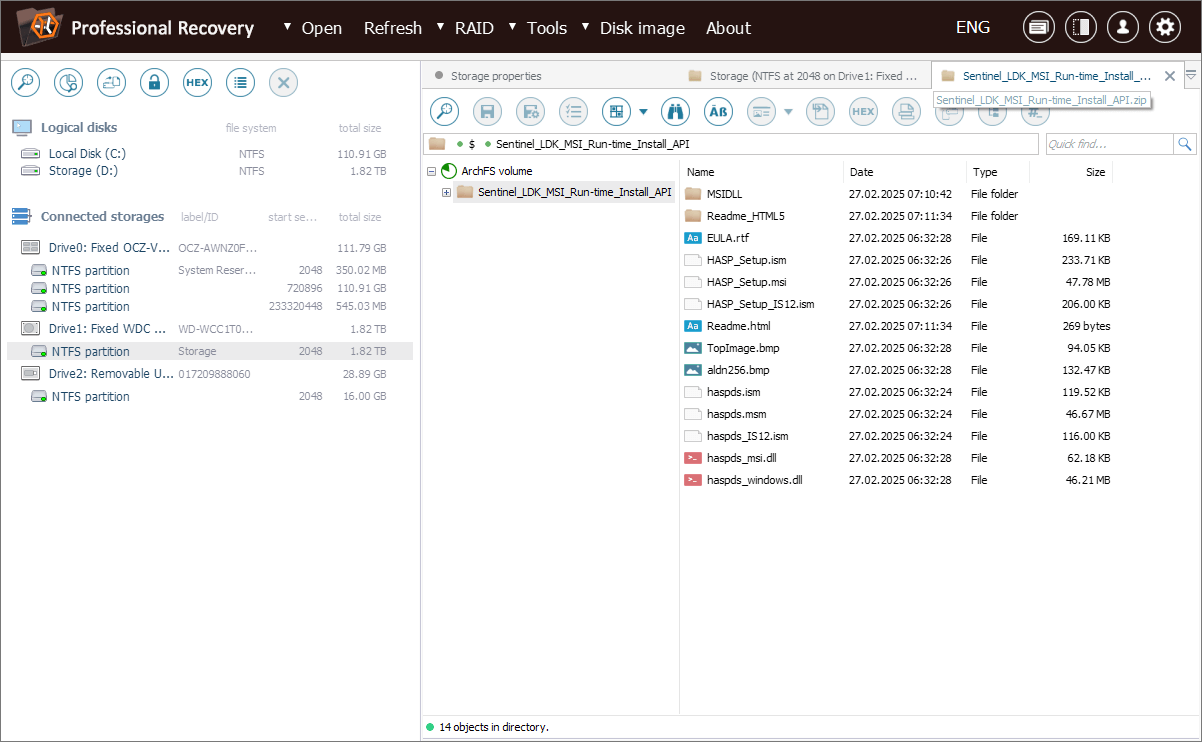
Reworked support for Microsoft data deduplication
Support for Microsoft data deduplication, a space-saving feature of Windows Server, has been extensively revised for both NTFS and ReFS file systems. During data recovery, the software must correctly "rebuild" deduplicated files so they appear complete and usable. Previously, some deduplicated files could be restored with incorrect content when recovered from ReFS volumes (and occasionally NTFS). Very large files split into numerous deduplicated chunks sometimes resulted in missing or misaligned pieces. The recent updates optimize the internal interpretation mechanisms to handle these cases, ensuring all deduplicated files are reconstructed accurately and remain consistent. These improvements enhance both the stability and reliability of data recovery from deduplicated volumes.
Improved file system transformation functionality
The "Transform file system files" tool has been reworked to make NAS-specific transformations more flexible and reliable. Previously, the software relied on automatically detected metadata to perform transformations. Now, even if the metadata is missing or not detected, users can still carry out transformations by specifying the folder path where the file repository is stored or by providing a pre-saved, format-specific "cloud database".
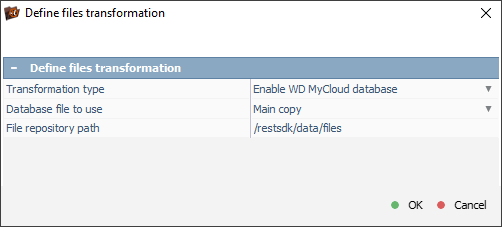
The tool now also supports the special "cloud" storage format used by Synology Drive to provide cloud-like access. Instead of storing files in a standard folder structure, the service keeps them in a dedicated repository alongside metadata. UFS Explorer can interpret this cloud repository structure and restores the files as they appear to the user, without requiring the original Synology software.
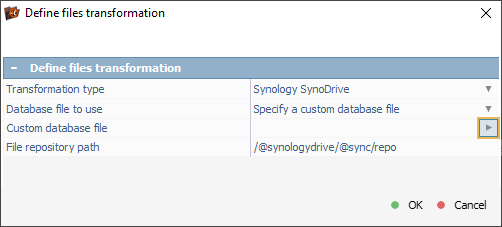
What’s more, improvements to the SQLite metadata parser make it possible to load databases that previously couldn’t be processed, enabling smooth transformations on virtual file systems that rely on SQLite metadata.
Support for additional storage technologies
UFS Explorer now can read newer ESXi OSDATA partitions that use the VMFS6 format, commonly found on modern VMware ESXi virtual storage. This ensures that virtual disks formatted with the latest VMFS6 file system are fully accessible within the software.
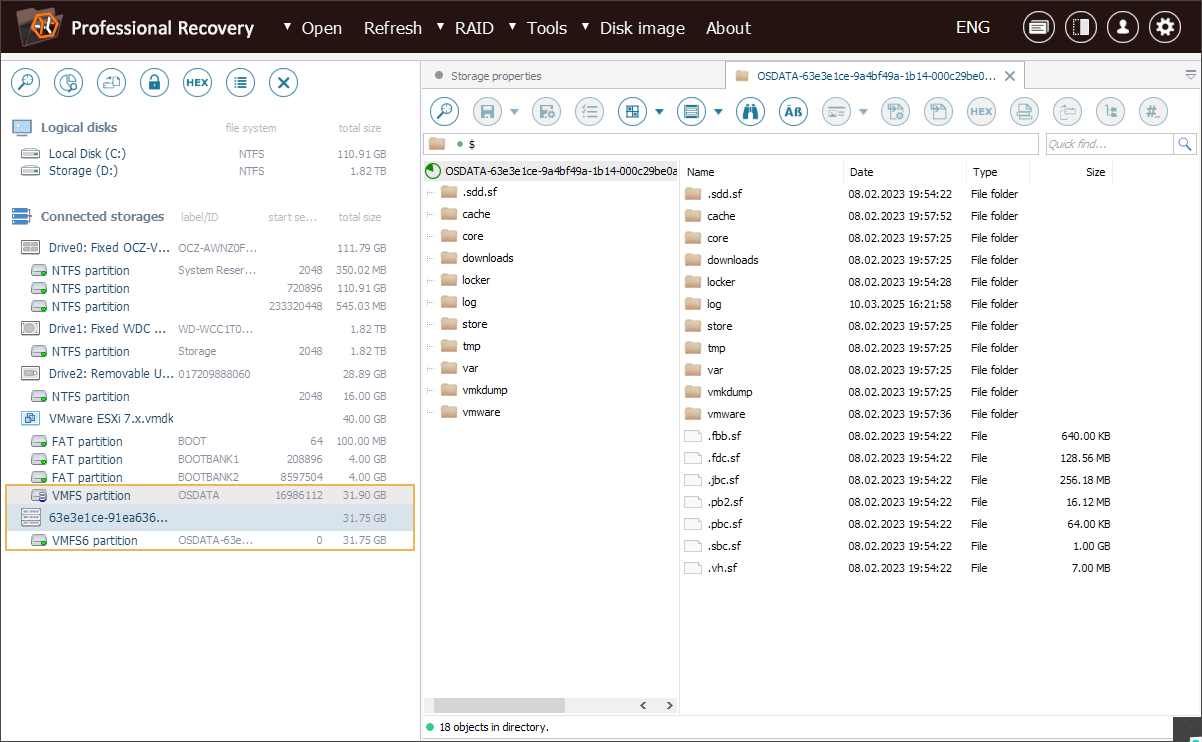
Moreover, experimental support for NTFS Restore Points has been introduced. This allows the software to virtually roll back a volume to a previous checkpoint, enabling access to files as they existed at that specific moment in time. This feature is especially useful for recovering lost data or analyzing historical states of a file system.
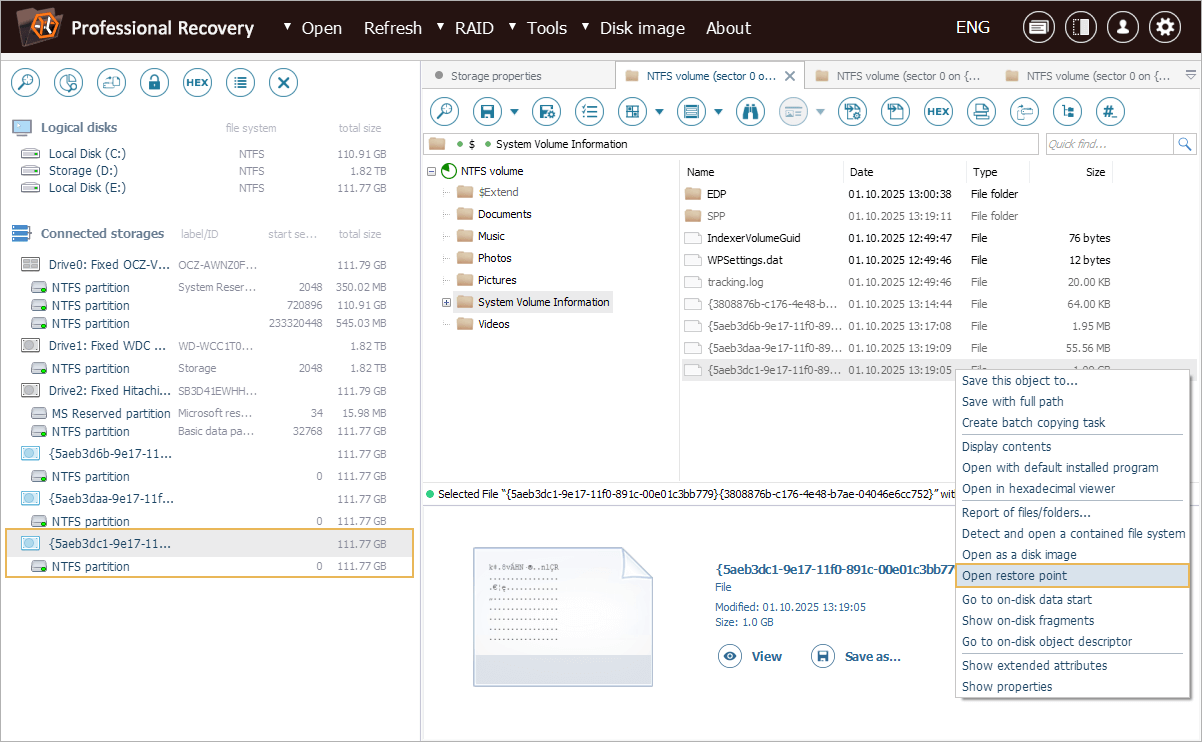
Modernized licensing system
The Professional editions of UFS Explorer have switched to a more modern licensing system, replacing traditional static codes with Thales Sentinel digital licenses. By default, users get a Cloud-based license (Sentinel CL), which operates online and is not tied to specific hardware. This makes it OS-independent, providing greater flexibility for users who work across multiple platforms. For those needing offline operation, it is also possible to request a Machine License (SL), which allows use in isolated environments without Internet connectivity.
For users with an active updates period, the transition is completely free. Those whose updates period has expired can still switch to a Sentinel license at a significant discount. More information about the transition to Sentinel is available in our dedicated blog article.
UFS Explorer Technician
The Technician edition of UFS Explorer has received some unique updates for more efficient professional-grade data recovery.
Extended support for IBM Storwize
UFS Explorer Technician can now work properly with IBM Storwize storage systems that use the latest version 4 metadata format. With this support, the software can correctly recognize newer Storwize systems, reconstruct virtual volumes and access the data stored on them, enabling smooth recovery from these complex storage configurations.
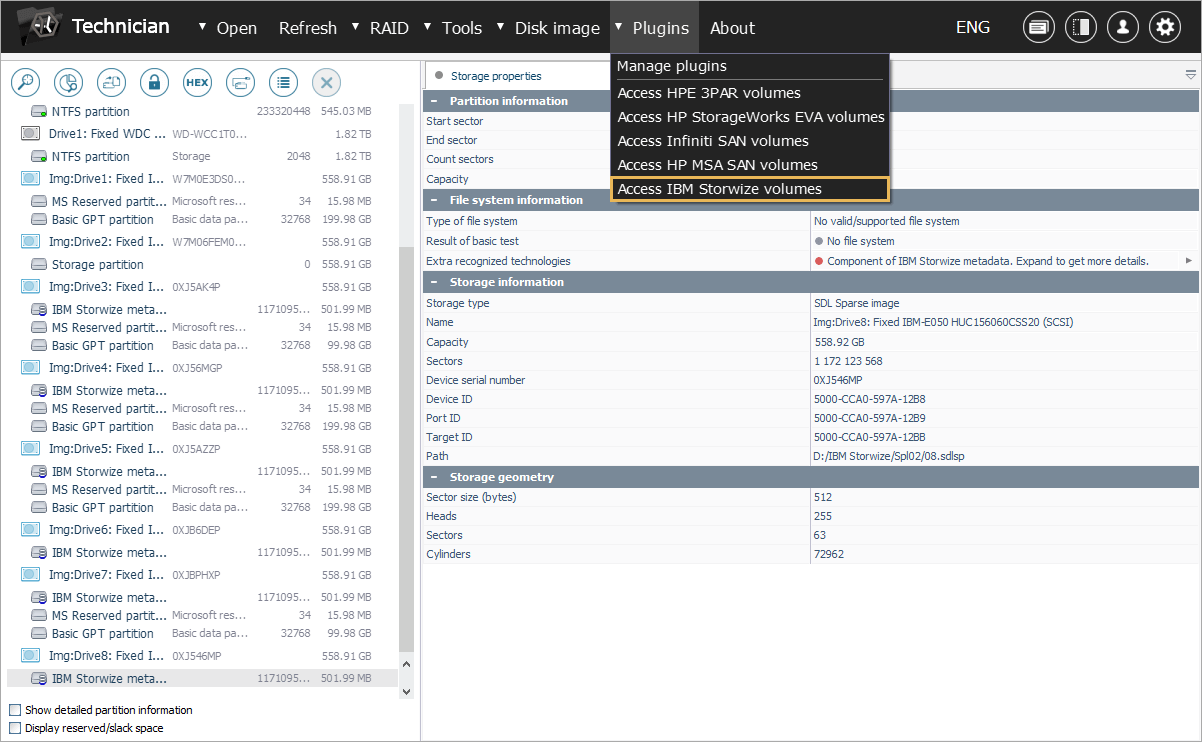
New short-term licensing option
As mentioned above, traditional registration codes in the Professional editions of UFS Explorer have been replaced with Thales Sentinel digital licenses. A key addition to this transition is the new short-term license for UFS Explorer Technician: users can now purchase a 3-month license at 50% of the regular price (€399.95). This option makes the software more accessible for professionals who only need it for temporary projects, offering a cost-effective way to access the full capabilities of the Technician edition without committing to a permanent license.
These updates demonstrate how UFS Explorer continues to evolve across its editions, offering users increasingly versatile and reliable tools for data recovery. The latest version of the software can be downloaded directly through the program interface or from the Software Store, which also provides the full changelog.
